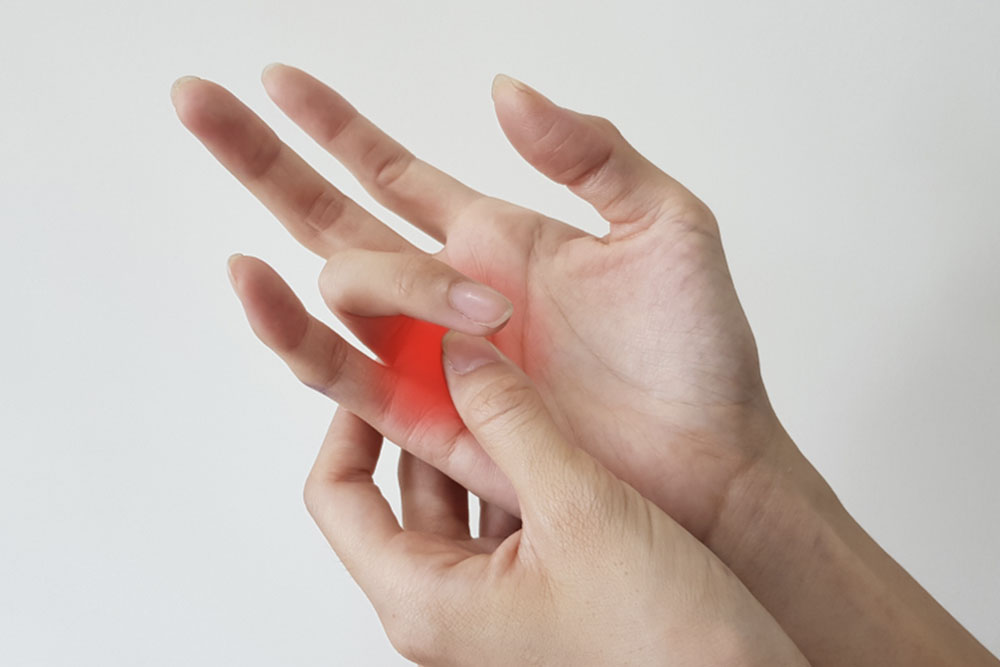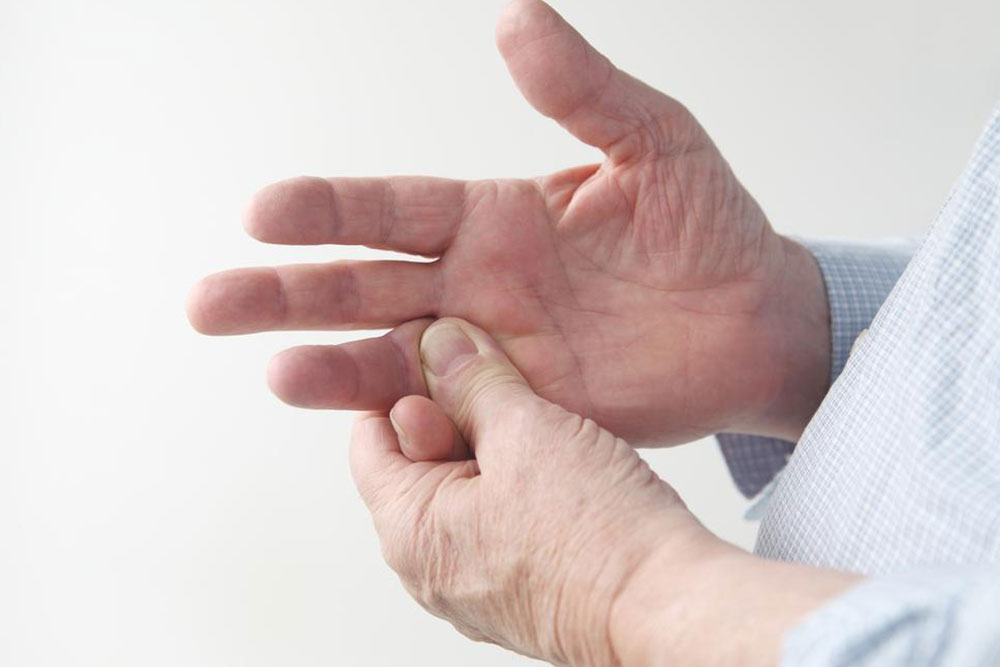Complete Guide to Trigger Finger: Causes, Symptoms, and Effective Treatment Strategies
This comprehensive guide explores trigger finger, a common condition causing finger locking and pain. It covers causes, symptoms, and versatile treatment options from conservative approaches to surgery. Early diagnosis and proper management are emphasized to prevent long-term disability. Learn how repetitive movements and systemic health issues contribute to this condition and discover effective strategies for relief and recovery. Suitable for anyone experiencing finger stiffness or locking, this article serves as an essential resource for understanding and managing trigger finger effectively.

Complete Guide to Trigger Finger: Causes, Symptoms, and Effective Treatment Strategies
Trigger finger, also known as stenosing tenosynovitis, is a common hand condition characterized by the locking or catching of a finger during movement. This disorder causes the affected finger to become stuck in a bent position, often accompanied by pain, stiffness, and sometimes a clicking sensation when trying to straighten it. While it can affect any finger, the thumb, in particular, is frequently involved and termed trigger thumb. Understanding the underlying causes, recognizing the symptoms early, and exploring effective treatment options are crucial for managing this condition effectively.
Understanding Trigger Finger: What Is It?
Trigger finger occurs when the tendons that facilitate finger movement become inflamed, swollen, or develop nodules. Tendons are tissue structures that connect muscles to bones and enable joint movement. In the fingers, tendons run through a protective sheath that guides their movement. When this sheath becomes constricted or inflamed, it hampers the smooth glide of tendons, causing the finger to catch or lock in position. The technical term for this condition is stenosing tenosynovitis, which emphasizes the narrowing (stenosis) of the sheath surrounding the tendons.
The condition can develop gradually due to repetitive hand movements or sudden injury. It’s especially common among people engaged in repetitive gripping tasks or those with underlying health issues that predispose to inflammation, such as rheumatoid arthritis or gout. Women, particularly between the ages of 40 and 60, are more susceptible, and those with diabetes also face increased risk.
Common Causes of Trigger Finger
The etiology of trigger finger involves multiple factors. Repetitive motion, especially gripping or squeezing motions, puts excess strain on the tendons. Over time, this leads to inflammation and swelling, creating nodules on the tendon. These nodules can buckle as they pass through the constricted sheath, leading to catching or locking. Other causes include trauma, direct injury to the finger or palm, and certain systemic diseases such as rheumatoid arthritis and diabetes, which increase the tendency toward inflammation and tissue thickening.
Different factors contribute to the development of trigger finger, including:
Repetitive gripping activities, such as those performed by musicians, farmers, or craftsmen.
Chronic inflammation from autoimmune diseases like rheumatoid arthritis.
Metabolic conditions like gout and diabetes.
Age-related degeneration of the tendons and sheath tissues.
Previous hand injuries or trauma.
Recognizing these contributing factors helps in early diagnosis and prevention strategies.
Recognizing the Symptoms of Trigger Finger
Early detection of trigger finger is vital for effective management. The classic symptoms include a tender bump or nodule at the base of the affected finger on the palm side. This bump is the swollen part of the tendon or sheath and often becomes more prominent over time. Individuals may experience pain or discomfort, especially during finger movement or after periods of inactivity.
Common symptoms include:
Persistent or intermittent catching or popping sensation during finger movement.
Finger stiffness, particularly in the morning or after rest.
Difficulty fully extending or flexing the finger.
Pain in the palm or along the affected finger, usually worse at night or during movement.
In severe cases, the finger may remain locked in a bent position, requiring manual force to straighten it.
The severity varies among individuals, and early intervention can prevent progression to more debilitating stages.
Effective Treatment Options for Trigger Finger
Management of trigger finger involves a range of conservative and surgical interventions, tailored to the severity of the condition.
Non-Invasive Treatments
For mild cases, non-invasive approaches are often effective. Resting the finger and avoiding activities that exacerbate symptoms is crucial. Immobilizing the finger with a splint, especially at night, helps keep the tendon in an extended position, reducing inflammation and preventing further locking.
Gentle stretching exercises can enhance flexibility and reduce stiffness. For example, kneading clay or performing finger extension and flexion exercises promotes tendon gliding. Regular hand massages and warm water soaks infused with soothing oils like eucalyptus or peppermint may alleviate discomfort by improving circulation and reducing inflammation.
Over-the-counter NSAIDs (non-steroidal anti-inflammatory drugs) may be recommended by healthcare providers to reduce pain and swelling. Proper ergonomic adjustments in daily activities and the use of protective gloves can further minimize strain on the tendons and decrease symptoms.
Home Remedies and Lifestyle Modifications
Besides medical treatments, home remedies can be beneficial. Applying warm compresses reduces inflammation and relaxes the tendons. Hand massages improve blood flow and promote healing. Maintaining good hand hygiene and avoiding repetitive motions without adequate breaks help prevent aggravation. A diet rich in anti-inflammatory foods, such as omega-3 fatty acids, fruits, and vegetables, supports overall tissue health.
Advanced Medical Procedures
When conservative measures fail, or symptoms worsen, medical procedures may be necessary. Percutaneous release involves inserting a fine needle to break apart constricting tissue or nodules, thereby freeing the tendon’s movement. This minimally invasive procedure is often performed under local anesthesia and as an outpatient treatment, resulting in quick recovery.
For more persistent or severe cases, trigger finger release surgery is considered the gold standard. The surgeon makes a small incision in the palm and cuts open the constricted part of the tendon sheath, allowing the tendon to move freely. Postoperative physical therapy and hand exercises facilitate optimal recovery and prevent recurrence.
Post-Treatment Recovery and Rehabilitation
After procedures, patients typically undergo physical therapy and specific exercises to restore strength and flexibility. Following healthcare instructions, such as keeping the hand elevated, managing pain, and avoiding strenuous activities initially, is essential for successful recovery. Most individuals experience significant symptom relief within a few weeks, with full function gradually returning over time.
Conclusion: Staying Ahead of Trigger Finger
Understanding the causes, recognizing early symptoms, and choosing appropriate treatment options are key to managing trigger finger effectively. Early intervention can prevent progression and reduce the risk of permanent disability. Maintaining hand health through ergonomic practices, regular stretching, and prompt medical attention when symptoms appear can help individuals lead active, pain-free lives.





